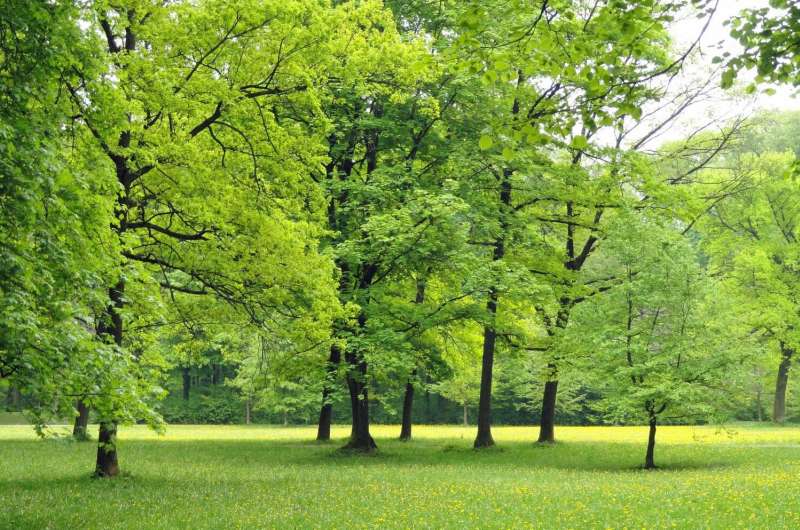
Credit: CC0 Public Domain
Higher levels of greenness are associated with lower risks of hospital admissions for mental disorders, finds an analysis of data from seven countries over two decades, published in The BMJ’s climate issue.
The results suggest that this protective effect increases with greater exposure to greenness, with no clear threshold—evidence that can inform urban design and health policy to better protect mental health, say the researchers.
Mental well-being remains a global challenge. It’s estimated that 1.1 billion people had mental disorders in 2021, contributing to 14% of the global disease burden with associated economic and societal costs.
Growing evidence suggests that exposure to greenness might reduce the risk of mental disorders, but most previous studies are limited to single countries, short-term exposures, or specific mental health outcomes.
To address these gaps, researchers analyzed 11.4 million hospital admissions for mental disorders from 6,842 locations in seven countries (Australia, Brazil, Canada, Chile, New Zealand, South Korea, and Thailand) from 2000 to 2019.
They included all-cause mental disorders and six specific categories (psychotic disorders, substance use disorders, mood disorders, behavioral disorders, dementia, and anxiety).
Greenness was measured by the normalized difference vegetation index (NDVI), a widely used and reliable satellite-derived metric for assessing vegetation levels in a given area.
Factors including population levels, weather conditions, air pollutants, socioeconomic indicators and seasonality were taken into account and models were stratified by sex, age, urbanization, and season.
The results show that local greenness was associated with a 7% reduction in hospital admissions for all-cause mental disorders, with stronger associations for substance use disorders (9%), psychotic disorders (7%), and dementia (6%).
However, associations varied across countries and disorders. For example, Brazil, Chile, and Thailand showed consistent protective associations across most disorders, while in Australia and Canada, greenness was associated with modestly increased risks for all-cause mental disorders and for several specific disorders.
Overall, protective associations were strongest in urban areas, where an estimated 7,712 hospital admissions for mental disorders annually were potentially preventable through greater exposure to greenness.
Seasonal patterns were also found in urban areas, suggesting that climate and weather conditions play a crucial role in how green spaces are used and perceived, say the authors.
Further analysis in urban areas suggested that a 10% increase in greenness was associated with fewer hospital admissions for mental disorders, ranging from around one per 100,000 in South Korea to approximately 1,000 per 100,000 in New Zealand.
This is an observational study, so no firm conclusions can be drawn about cause and effect and the authors acknowledge the uncertainties of using hospital admission data from multiple countries. They also point out that their results only capture severe disorders requiring inpatient care, so underestimate the full burden of mental health.
Nevertheless, they say this study suggests “a considerable proportion or rate of hospital admissions for mental disorders may be associated with exposure to greenness and could potentially be reduced through greening interventions under realistic scenarios.”
“These mental health benefits may also bring broader economic and social advantages, including reduced health care costs, less strain on health systems, improved workplace productivity, and enhanced community well-being.”
Future research should aim to explore the differential effects of various types of green spaces, such as parks or forests, on mental health outcomes, and focus on assessing the quality and accessibility of green spaces, they add.
More information:
Greenness and hospital admissions for cause specific mental disorders: multicountry time series study, The BMJ (2025). DOI: 10.1136/bmj-2025-084618
Provided by
British Medical Journal
Citation:
Greater exposure to greenness linked to fewer hospital stays for mental disorders (2025, November 5)
retrieved 6 November 2025
from https://medicalxpress.com/news/2025-11-greater-exposure-greenness-linked-hospital.html
This document is subject to copyright. Apart from any fair dealing for the purpose of private study or research, no
part may be reproduced without the written permission. The content is provided for information purposes only.

